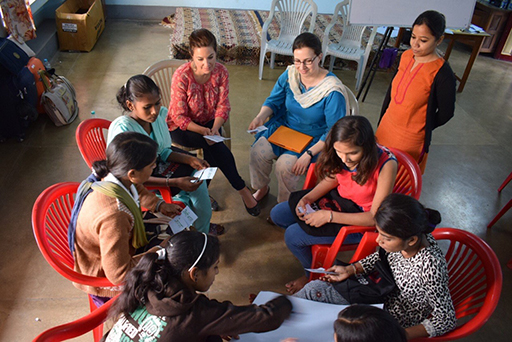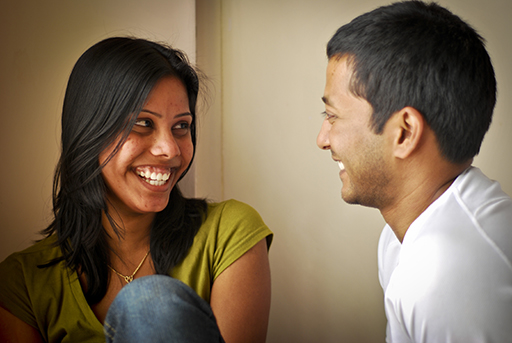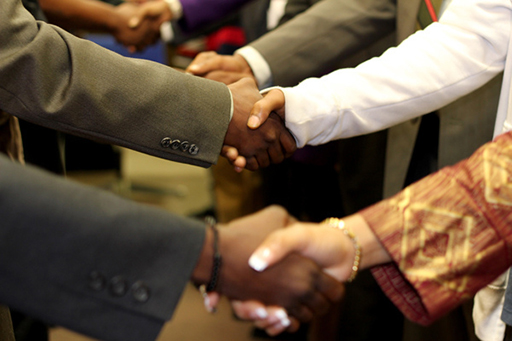Use 'Print preview' to check the number of pages and printer settings.
Print functionality varies between browsers.
Printable page generated Thursday, 20 November 2025, 4:43 PM
Learning Session 5: Communication, consent and relationships
Introduction
Communication, consent and relationships are topics which governments, schools and other institutions are often happy to include in sexuality education. They may have concerns about bullying or abuse, and want young people to have the information and skills to report coercive relationships. This is good and important.
However, as you will now understand from previous learning sessions, discussing communication, consent and relationships also needs to include what makes them good and positive. Young people need to understand that relationships should be pleasurable, as well as to understand what constitutes abuse – in effect, communicating with young people using a sex-positive approach.
Like the other learning sessions in Part 2 of this resource, this learning session aims to offer you some ideas for activities to use within your existing CSE sessions. It contains a mixture of preparatory activities for you to do yourself before teaching, and activities to use within a CSE session. By the end of this session you should:
- Have some new ideas about how to include pleasure within CSE sessions you are leading which focus on communication, consent and relationships.
- Feel more confident about including pleasure within these sessions.
5.1 A good relationship
This first activity can be a good one to do at the beginning of a CSE session, or at the beginning of a series of sessions. It asks young people to come up with a vision of a good relationship with a romantic partner. The aim is to help them think about positive relationships with sexual partners and about the role of sexual pleasure within a good relationship.
You can also repeat the activity at the end of the sessions, to see whether participants’ ideas have changed. You might find it helpful to do parts of the exercise yourself as well – there are no right answers because different things are important to different people.
Activity 5.1: What does a good relationship look like?
Step 1: Show the students a list of statements similar to this:
- We love each other
- We listen to each other
- We have pleasurable sex
- We are faithful to each other
- We can laugh together
- We respect each other’s boundaries
- We try out different types of sex
- We have shared dreams of the future
- We treat each other with respect
- We have fun together.
Explain that this is one person’s vision of a really good sexual and romantic relationship. Ask the participants to imagine their ideal romantic relationship. Ask them to write down their own list similar to the one above.
It is important that each person feels comfortable enough writing down their uniquely personal ideas of the perfect relationship, so make it clear that their answers will remain private and won’t be shared, and that theirs may not be the same (or even similar) to the answers others give. Everyone is different, and we will all have different ideas of what an ideal relationship looks like.
Alternatively, with a confident group, you might just ask them to come up with their own ideas, without writing up the list first, or just give them one or two prompts from the list verbally.
Step 2: Divide the group into small groups of 3–4 people. Ask each group to agree on some statements about what a good sexual and romantic relationship looks like.
Step 3: Ask each group to present their agreed visions. While they are presenting them (or afterwards), choose some of the points and ask questions to help them make their visions more concrete.
For example:
- How will you know that you love each other?
- How will you know that sex is pleasurable for both of you?
- What does ‘being faithful’ mean to you?
- Why is it important to laugh together?
- Give me an example of what treating each other with respect would look like.
- Give me an example of what treating each other disrespectfully would look like.
- What would you do if one of you wants children and the other doesn’t?
Use these questions to help participants think about what a good sexual and romantic relationship is in real life, as opposed to an idealised one.
5.2 Practising consent through handshakes
The next activity is not one you can do by yourself, although you could find a colleague or friend to work with if you would like to experience it yourself before you include it in a CSE session.
It offers a way to help young people think about the importance of communication around consent, without focusing on sexual activity.
It reminds us that all sorts of relationships and interactions require communication to make sure each person is comfortable and content.
Activity 5.2: Consensual handshakes
Here you will find a full lesson plan, including educators’ notes. This activity was developed by Justin Hancock and Meg-John Barker and is available at Bish Training. This activity is also available as part of dosreforschools.com where you can find a whole suite of free resources for teaching over 14s around consent, gender, sexuality, safer sex, relationships and self.
Below, we summarise the main aspects of this activity. Use the lesson plan in the link above for the full description.
Summary
Ask people to shake hands with others, or greet in another way that feels comfortable to them, and then ‘score’ this handshake by analysing how it felt.
Then they prepare to do a second handshake by first negotiating with their partner, for example they might discuss the tightness of the grip, whether they’d prefer to just wave at each other instead, etc.
Then the group discusses how this felt compared to the first greeting.
For the third handshake they will be asked to really pay attention to the other person, building on what they’ve learnt and to try a greeting they feel will be mutually beneficial.
Finally, the group discusses how they found the activity and what they discovered about the three versions of their greeting.
In your comments on the activity, you can bring out the analogies with sexual consent – there are suggestions on how to do this in the lesson plan.
5.3 Love scenes
The next activity looks closely at the messages about communication, consent and relationships that we receive through films and other popular media. It is designed to be used within a CSE session but you will probably find it useful to work through the activity yourself first before you use it with a group.
Activity 5.3 Rewrite the love scene
Find an example of a short ‘love scene’ in a popular film or television show. This should not show sex but should be a scene which implies a sexual relationship.
Choose a clip that you would be happy to show in a CSE session. If you are not able to show video you could try to pick a very famous film which the class can call to mind and relate to.
Show the young people the scene and ask them some questions like these:
- What messages is the scene giving the audience about gender and sexuality?
- How do these people communicate about sex and desire?
- Is sex mentioned? If so, do you think they are using condoms or contraception?
- Do you think it shows a positive relationship?
- How likely do you think it is that this love scene will lead to pleasurable sex for both people?
You may wish to add new questions or remove the ones that don’t fit so well with the scene you have chosen.
In the boxes below, for each question we give some suggestions on how to respond to comments and to extend the activity.
What messages is the scene giving us about gender and sexuality?
If the scene relies on gender stereotypes, ask the group to identify these and challenge if they are always true. Love scenes tend to depict men as driving the action, and women as passive – which can give a gender-biased view of sex and relationships. If a different-sex couple is shown, can the young people imagine seeing the same kind of relationship being shown between a same-sex couple? If not, why do they think this is?
How do these people communicate about sex and desire?
Often on screen, a romantic or sexy scene implies that kissing and sex should be silent. We may see a man push a woman up against a wall and kiss her passionately, but they rarely discuss or agree what they are about to do beforehand. In films it is implied that you immediately and automatically know what your partner likes, but in real life you need to communicate to find out.
Do you think they are using condoms or contraception when they have sex? Is this mentioned?
It’s unlikely! One study of 350 UK and US soap operas and comedy shows popular with 16–24 year olds found that only 7% of the sex scenes included discussions of safe sex, and other studies have found similarly low rates. If you would like to read a report about this study, you can find it here: Mis-selling Sex
Ask your group whether they think films and television should include mention of condoms or contraception in love scenes to make them more realistic. Or do they think that this would spoil the romance?
Do you think it is a positive relationship? Why/why not?
This can be a chance to speak about positive relationships and respect. Do they seem to be listening to one another? Do they seem to care about the other person’s feelings? Can the young people in your group spot signs of possible controlling behaviour? For example, if a person is checking someone’s text messages behind their back?
How likely do you think it is that this love scene will lead to pleasurable sex for both people?
Here you could talk about the difference between films or television and real life. The love scene probably implies that both people will have pleasurable sex. But if this was real life, do they think they would both experience pleasure? How could talking about their feelings and desires help them to have more pleasurable sex?
Make some notes about how you could rewrite this scene to make consent and communication clearer? Could you add some dialogue to the script? Before they kiss, or walk off into the bedroom, what could they say to each other? Could you add some non-verbal communication?
Now split the young people up into small groups and ask them to write down some suggestions for ways to rewrite this scene to make consent and communication clearer. What dialogue could you add to the script? Before they kiss, or walk off into the bedroom, what could they say to each other? You could give some examples to help them get started like:
“I’d love to kiss you – would you like that?”
“How do you like to be kissed?”
“Before we go through to the bedroom, have you got any condoms?”
You could also ask them to think about the ways in which consent can be communicated non-verbally. For example, they could include body language which shows consent in their script e.g. ‘she smiles at him and leads him toward the bedroom’.
Ask each group to choose one thing that would make the most difference to the scene, and ask one person from that group to tell the class.
Summary
In this learning session you have explored some resources to help you lead sessions about communication, consent and relationships, in a way that makes it clear that sexual pleasure should be one of the goals of sexual relationships. Having studied this session, you should now:
- Have some new ideas about how to include pleasure within CSE sessions you are leading which focus on communication, consent and relationships.
- Feel more confident about including pleasure within these sessions.
In the next learning session, you will find some resources focused around sexual behaviours and practices. These will help you include sexual pleasure in sessions you are leading which focus on these topics.
Now you can go to Learning Session 6.



